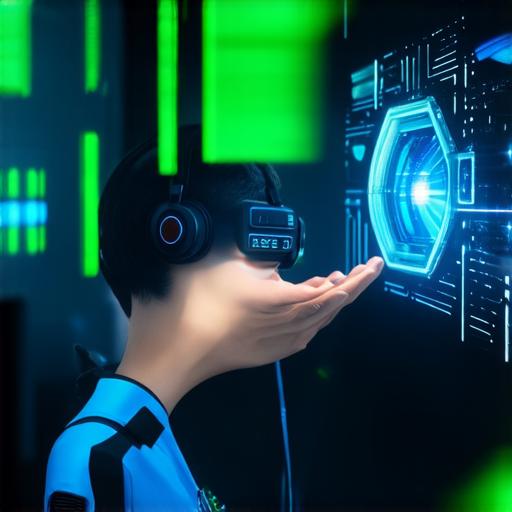In recent years, augmented reality (AR) technology has become an integral part of our daily lives, transforming the way we interact with the world around us.
What is Augmented Reality (AR)?
Augmented reality technology superimposes digital content onto real-world environments, creating an augmented reality experience. AR allows users to interact with virtual objects in a way that feels natural and seamless, as if they were part of the real world.
The term “augment” means to increase or add to, and “reality” refers to the physical world around us.
AR technology works by using sensors and cameras on a device to capture the real world around the user. The data from these sensors is then processed by software algorithms that add digital elements to the captured image. These digital elements are then overlaid onto the real-world environment, creating an augmented reality experience.
How Does AR Work?
AR technologies use different methods to track the real world, such as optical tracking, inertial tracking, and GPS. Optical tracking uses cameras to detect markers in the real world, while inertial tracking relies on sensors to measure the device’s motion.

GPS can be used to determine the user’s location and overlay digital content onto the real world based on that location.
AR technologies also use computer vision algorithms to recognize and track objects in the real world. This allows the software to accurately place digital elements onto the correct objects, creating a seamless and natural experience for the user.
Popular AR Applications
Gaming is one of the most popular applications of AR technology. Games like Pokémon Go have millions of users worldwide who use their smartphones to capture virtual creatures in real-world environments. Other popular gaming apps include Ingress and GeoAR Quest.
Education is another area where AR technology is being used to enhance learning experiences. For example, the app Aurasma allows students to explore historical sites by overlaying digital content onto real-world objects. This helps students to better understand the context of historical events and makes learning more engaging.
Healthcare is also using AR technology to improve patient outcomes. Surgeons can use AR to visualize patient anatomy in real-time, which can lead to more accurate and precise surgeries. Additionally, AR can be used to train medical students by simulating surgical procedures in a safe and controlled environment.
Marketing is another area where AR technology is being used to create engaging experiences for customers. For example, some furniture retailers are using AR to allow customers to see how furniture would look in their home before making a purchase. This can help customers make more informed decisions and reduce the number of returns.
Entertainment is also using AR technology to create immersive experiences for audiences. For example, the app Snapchat allows users to add digital filters to their photos and videos, creating a fun and interactive experience. Additionally, live events like concerts and sporting events are using AR to create unique and memorable experiences for attendees.
FAQs
What is the difference between augmented reality (AR) and virtual reality (VR)?
Augmented reality adds digital elements to the real world, while virtual reality creates a completely immersive digital environment that the user interacts with. AR allows users to see the real world and interact with digital content overlaid onto it, while VR creates a completely artificial environment that the user interacts with as if it were real.
Can AR be used for e-commerce?
Yes, AR technology can be used for e-commerce to allow customers to visualize products in their home or on their body before making a purchase. This can help customers make more informed decisions and reduce the number of returns.
What industries are using AR technology?
AR technology is being used across various industries such as gaming, education, healthcare, marketing, entertainment, and more. It has many applications and is constantly evolving and improving.
Conclusion
Augmented reality technology has transformed the way we interact with the world around us, and its potential for future developments is vast. From gaming to healthcare, AR has found applications across various industries and has become a powerful tool for enhancing our experiences of the physical world.
